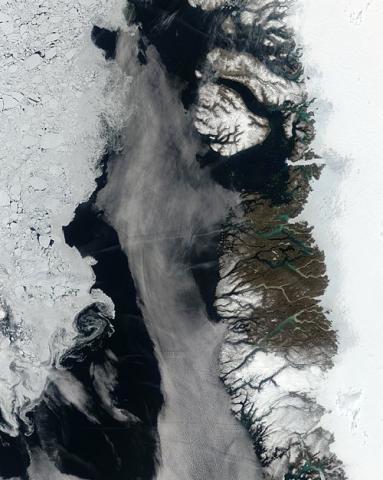As the world dithers, climate scientists are peering into their crystal balls to predict when the next shoe will drop. In a new study published in the Proceedings of the National Academy of Sciences, a team of international researchers led by Elmar Kriegler of the Potsdam Institute for Climate Impact Research surveyed 43 leading scientists to estimate the likelihood of a tipping point occurring in the near future.
The four tipping points the researchers studied include the restructuring of the Atlantic meridional overturning circulation (also known as the ocean conveyor belt or thermohaline circulation), the complete melting of the Greenland ice sheet, the disintegration of the West Antarctic ice sheet, and the increased frequency of the El Niño Southern Oscillation (ENSO) phenomenon.
Based on the scientists’ feedback, they concluded that there is a one in six chance that at least one tipping point will be triggered under conditions of medium warming (2 – 4ºC) and a more than one in two chance (56%) under conditions of high warming (4 – 8ºC) by 2200.
The latter case, Kriegler said, now appears to be a “clear possibility.” (W. L. Hare, another climate scientist at the Potsdam Institute, recently warned that, on current emission trends, global temperatures would rise another 4 – 6ºC by the end of the century.) To make matters worse, the appearance of one tipping point could also raise the possibility of others occurring.
Under the more extreme warming scenario, a majority of the respondents considered the complete melting of the Greenland ice sheet and the collapse of the Amazon rainforest, as a result of a more pronounced ENSO effect (which causes more droughts in the region), the most likely outcomes. In fact, the scientists believe that even a warming of less than 2ºC, which would already be considerable, could be enough to trigger the collapse of the Greenland ice sheet.
This, according to Richard Alley of Penn State, would cause global sea levels to rise roughly 23 feet – enough to flood parts of nearly all continental shores. (Even scarier would be the complete melting of the Antarctic ice sheet, which would cause sea levels to rise by 190 feet.)
ENSO, which is better known as simply “El Niño,” is a recurring, though irregular, coupled ocean-atmosphere phenomenon in the tropical Pacific that is commonly associated with severe droughts, floods and other extreme weather patterns. During El Niño conditions, the trade winds, which typically blow towards the west across the Pacific, weaken or reverse, causing warm water from the west Pacific to spread over to the east Pacific.
The warm water suppresses upwelling along the coasts, replacing the cold, nutrient-rich waters that fuel primary productivity – with predictable, and devastating, consequences for the marine biota. More frequent ENSO events would mean more droughts and fires in Indonesia and Australia and more heavy rainfall in California and Peru.
The thermohaline circulation, which helps moderate the global climate by transporting water masses of varying temperature and density around the world, will likely remain stable under conditions of medium warming; if temperatures were to rise by more than 4ºC, however, all bets would be off.
The scientists were less clear about the collapse of the West Antarctic ice sheet due to uncertainties in the data, though recent findings, which show an acceleration in the movement of inland glaciers following the breakup of ice shelf on the West Antarctic peninsula, seem to suggest it is more likely to happen than not, particularly under the higher warming scenario.
The large degree of uncertainty implicit in their findings does not, “necessarily imply that such events are considered to be remote,” the authors explain. “Even when allowing experts to express large ambiguity in their beliefs, and, using conservative assumptions for aggregating their probability estimates, we find significant lower probability bounds for triggering major changes in the climate system.”
It’s a good thing the global community is on top of the climate crisis or I’d be really worried right about now.
Subscribe to our newsletter
Stay up to date with DeSmog news and alerts






